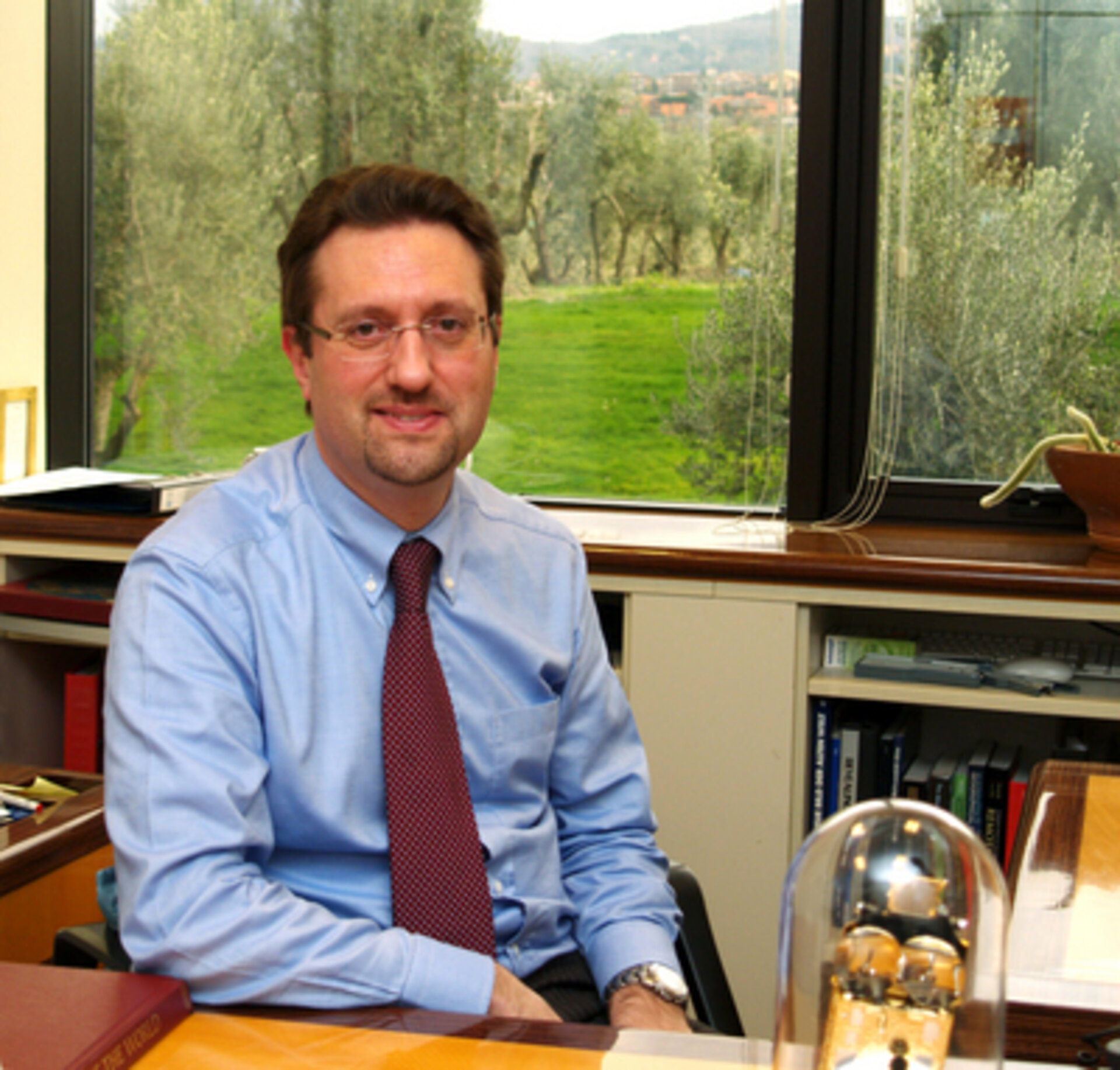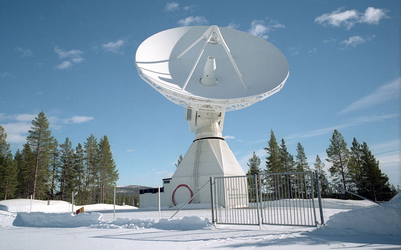CryoSat-2 Mission Manager: interview with Tommaso Parrinello
Tommaso Parrinello will be in charge of CryoSat once it becomes an operational spacecraft post-launch. After CryoSat's commissioning phase is complete, he will in particular oversee routine operations, including the delivery of data to users worldwide.

Tommaso, an Italian national, joined ESA’s European Space Operations Centre (ESOC) in Darmstadt, Germany, in 1992 as a young graduate to work on space debris modelling. He continued to work in the Mission Operations Department, gaining several years of experience in satellite operations, especially with XMM-Newton and ERS-2. In 2001, he was relocated to ESA’s Centre for Earth Observation (ESRIN) in Frascati, Italy, and in 2007 he moved to the Earth Observation Directorate where he assumed his current role in 2008.
He received a degree in Space Physics from the University of Pavia in Italy and a PhD in Remote Sensing from the University of Dundee in the UK.
ESA: What does being the CryoSat Mission Manager involve?
Tommaso Parrinello
I am responsible for the mission in its operations phase that starts once the commissioning activities have been completed. It is my responsibility not only to handle the mission budget but more importantly the satellite and ground segment operations as well as the exploitation of the scientific data. One of my main goals is to get the best of the data and to promote the results of the scientific community.
As Mission Manager I will interface with the relevant Earth Observation delegate bodies for technical, scientific and programmatic matters.
ESA: What has been the most rewarding aspect of being involved with the CryoSat mission so far?
Tommaso Parrinello
CryoSat-2 is a unique satellite. It flies a sophisticated altimeter that can measure the variation of thickness over ice sheets and sea ice fields with unprecedented accuracy.
The loss of the first satellite in October 2005 did not dishearten ESA or its Member States. Thanks to the dedication of hundreds of colleagues in ESA and in industry, the satellite is again on the launch pad after just four-and-a-half years from that event. This has never happened before.
Therefore, being part of the CryoSat family is rewarding per se but I believe that both for myself and for the people who have been working on the mission, the most rewarding aspect is still to come: when CryoSat is recognised as one of the most important missions to have contributed to a better understanding of our home planet and, in particular, how it is responding to global warming.
ESA: What is your involvement over the lifetime of the satellite?
Tommaso Parrinello
Since I have overall responsibility of the mission, I am going to spend a good part of each day talking to members of the operation teams, making sure that all the space and ground elements are running smoothly and delivering data to the scientific community. I am also going to focus on external communication, spending a lot of time with people outside the project in order to maximise the scientific return of the mission and to find new scientific collaborations. This includes Principal Investigators (PIs) and the public. For this, I will benefit from the help of the Lead Investigator of the CryoSat Mission, Duncan Wingham.
I expect to work on the mission for the entire lifetime of the satellite and beyond. The satellite has a potential operational lifetime that exceeds the original programmatic 3.5 years. Because there is no doubt that the data delivered by CryoSat will be of great value to the scientific community, I will be involved in seeking the opportunity to extend the mission beyond that time.
ESA: What have you found to be the most fascinating aspect of the CryoSat mission?
Tommaso Parrinello
Amongst many, I believe the most fascinating thing about the mission is that for the first time ever we are going to deliver elevation data over geographical latitudes never reached before by a satellite radar altimeter that per definition is an all-season instrument, not affected by weather conditions or cloud cover.
In fact, due to the orbit inclination of the current satellite altimeters, they are unable to measure an area approximately equal to Europe over the North and South Poles. To give another idea of scale, an area equivalent to the size of Greenland has never been measured over the Antarctica continent by satellite altimeter. CryoSat will bring this down by a factor of 10, leaving the total unexplored area close to the size of Italy.
ESA: Who will be the main users of CryoSat data?
Tommaso Parrinello
The biggest community of users are worldwide scientists who are experts in using satellite data to measure trends in the variation of the Earth’s cryosphere, like ice sheets, sea ice and glaciers.
With the effects of a changing climate fast becoming apparent, it is increasingly important to understand exactly how Earth’s ice fields are responding. This explains the large expectation of the scientific community for the CryoSat data, confirmed by the vast response to the two calls of Announcement of Opportunity issued in 2004 and 2008.
At present, there are almost 200 institutions, including 120 PIs from 22 countries worldwide who will use the data. Once the mission is launched and we start to distribute the data, I expect this number to increase.
It also important to say that, while the main objective of CryoSat is the study of land and sea ice, if satellite resources allow, data acquired over the oceans and over several inland and coastal hydrological systems will increase the CryoSat scientific community even further.
ESA: How will CryoSat data be delivered to users?
Tommaso Parrinello
The CryoSat ground segment will be operated under the responsibility of the Ground Segment Department in ESRIN where the mission planning and the user services are hosted. The data will be acquired and processed at Kiruna (Sweden) and then made available to users mainly via online dissemination.
Users will also rely on a single long-term data archive in CNES (France space agency) who will also be responsible for the data reprocessing once new algorithms or changes to the scientific processors are implemented. Our goal is to offer easy access to data.
ESA: Where will you be for launch?
Tommaso Parrinello
Although the main event will be held at ESOC, I will be in ESRIN where a local event is being organised. I will welcome the local authorities, my colleagues and their families. CryoSat has already marked a record with respect to the two other Earth Explorers launched so far. The lift-off is planned for 14:57 CET, indeed a very sociable time to launch a satellite!
Editor's note:
This is one in a series of interviews with a few of the key people that are involved in the CryoSat mission. Please check back as the list will be added to over the coming weeks.





